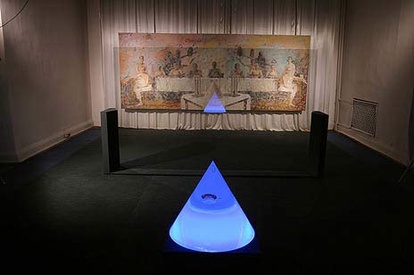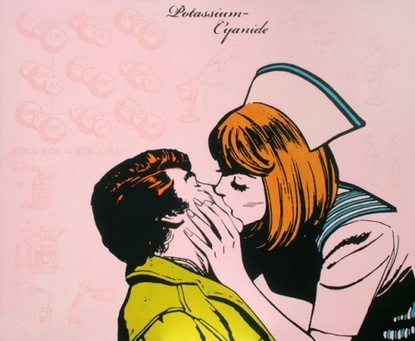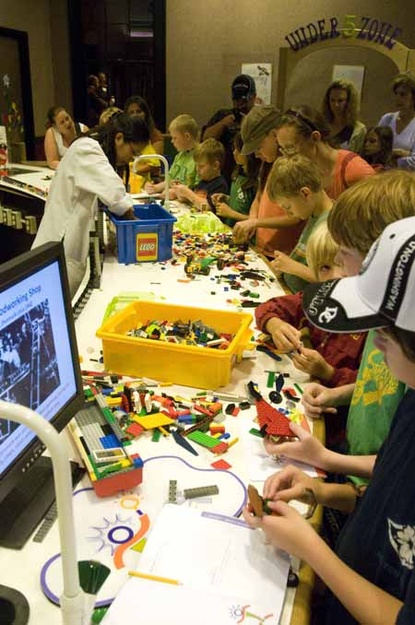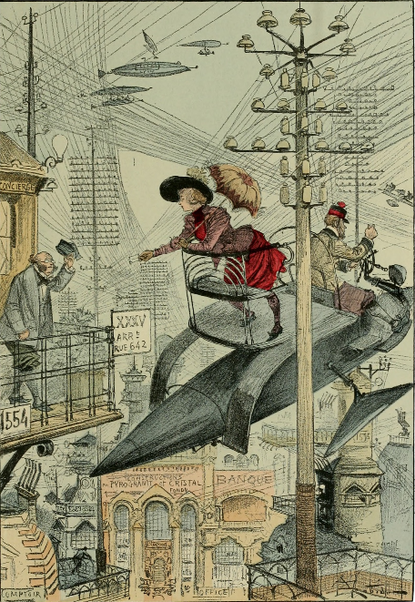Stepan Ryabchenko: “Before creating the piece, I had to fight for it”

Stepan Riabchenko in an interview with Natalia Shpitkovskaya
Photo: Ekaterina Zolotukhina
The artworks created by Stepan Riabchenko are easily recognized even by the audience unexperienced in art. But still, many questions occur. What is this? What does the artist want to say with this piece of art? How does he create his works?
So, as soon as Stepan came for a visit to Kyiv to take part in the exhibition Art&Design, we had an in-depth conversation with him on every issue.
Stepan, you have an architectural education. What inspired you to become an artist and apply your knowledge in the arts?
I was born in an artistic family. My father, mother and grandfather are artists. When I was a boy, I was interested in every part of creative process. I constructed, drew, sculpted, constantly was engaged into the creative process. After graduation, I decided to study architecture. And I have been motivated by the idea of synthesis of the arts, - an option to combine function with the artistic component, thereby creating a whole entity with its unique image. I worked a lot in conceptual architecture. It was important for me to bring the lacking artistry and imagery to architecture. And in fact, we still face the lack of it nowadays. Many projects were created. I was a laureate of several competitions, in 2007 took a study course in Moscow in the studio of the famous architect Andrey Chernikhov (the grandson of the legendary Soviet architect Yakov Chernikhov). It was an unforgettable experience! Along with it, employing architectural tools, I started to experiment in the visual arts. In the beginning of 2007 I created the first virtual reliefs from the Kaleidoscope series, and later in 2007 I started to visualize Computer Viruses.

Multifunctional complex
Architectural project | Belyaevka city, Odessa region, Ukraine | 2011
And who was the first to discover your talent and revealed your artworks to public? Do you remember your first exhibition?
Well, it was an interesting challenge! In 2007, my father said that he liked what I was doing, and advised to exhibit a couple of my artworks. As far as I remember, it was a regional exhibition held in the halls of the Union of Artists. Among the artists who took part in the exhibition were the legendary Odessa nonconformists, representatives of the Mamai group. Predominantly, paintings and graphics were displayed there. I had two small prints from the Kaleidoscope series. Those works did attract attention! I do remember artists Sergei Savchenko and Vladimir Tsiupko coming up to me and giving compliments, for me it was of great importance at the initial stage.
Sure! Your works were completely different!
Yes, right. And there appeared questions like: «How come – not hand-painted artwork, but just printed!?»

Kaleidoscope
Installation project | digital printing, mirror structure | 2015
Did they questioned if that was really an art?
No way. On the whole, the works made an overall positive impression. The creative technique disoriented the audience, I think. In 2008, when the museum opened, the “computer virus” Chameleon was on display to public for the first time. In a while, the artwork appeared on the local glossy magazine’s spread. After the exhibition well-known gallery owner and collector, Anatoliy Dymchuk, bought it for his collection. It was a huge motivation boost. I was pleased to realize the demand for my creations.
Epiphany (Appearance) | 500 cm, metal | 2012 (From the collection of Igor Voronov)
N.N. Grishko National Botanical Garden, Kiev | 2012
Фото: Stepan Riabchenko
In general, your artworks are not handmade or hand-painted, but created with the help of a computer. I am constantly asked by many viewers how do you create them?
Architecture has become my basis. The practice involves the use of architectural programs, primarily three-dimensional modeling. In fact, I am still an architect, but an architect of the virtual space, I keep on creating my utopia. Sometimes it materializes, as in the Epiphany (Appearance) sculpture.
How does an idea for artwork appear?
It is a process. I don’t make any preliminary sketches, drafts, I immediately get down to work. Only pure space in my head and a mouse in hand. The process is similar to the job of a movie director – new thoughts come, I combine some of them, some characters come, others go. Eventually the plot is revealed with its image and a temper, a microcosm comes to life. Sometimes I combine several into the bigger one, sometimes a certain group of characters migrates to a new landscape. It is a never-ending story.
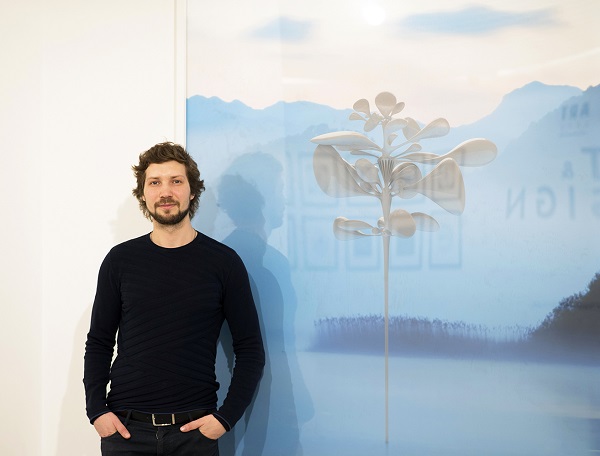
Stepan Riabchenko
Photo: Ekaterina Zolotukhina
It is a kind of game with yourself, isn’t it?
Life is a kind of game, after all. As an artist, I create my own game, where fantasy and reality are intertwined, being the basis for visualizing ideas that are of great interest for me and which I would like to bring to the world.
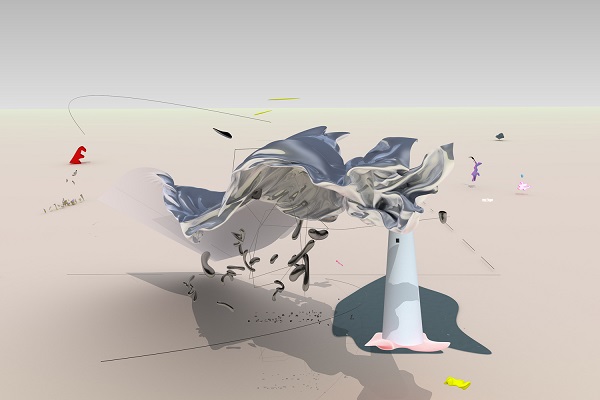
Empire
150 x 225 cm, digital print on aluminum | 2012
One of the guests attending the Art & Design exhibition, you took part in, for the first time when saw your work, said that it’s Dali. To which I replied: «Yes, perhaps Ukrainian Dali!». Salvador Dali is usually associated with surrealism. Do you consider your works to be surreal? Why do you tend to “dive” into those worlds?
I do not really analyze myself on belonging to any specific art movement. Usually it flows by intuition. Beyond doubt, fantasy is important for me. The images that I create, one won’t find in reality. Due to that the artworks acquire surreal forms. In a word – I create my own reality, while Dali transformed the existing one, we have fundamentally different approaches.
You have the series of works: Computer Viruses, Virtual Flowers, now – Virtual Landscapes. Tell us about the works, that you created, including those exhibited in Art & Design.
If, say, in the Computer Viruses and in earlier works was a confrontation between characters, in recent works I was interested in creating new landscapes where my characters could interact peacefully with each other.
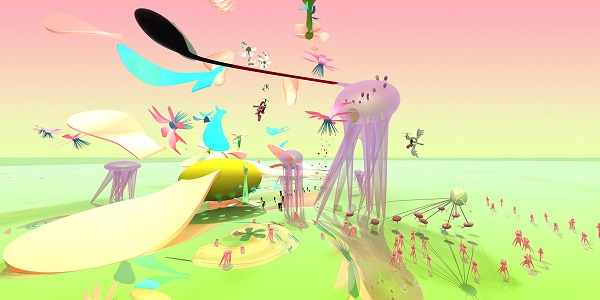
Dance
150 х 300 сm, digital print on aluminum, plexiglass | 2016
You have two works on exhibition. One is the Dance, the other – At Dawn. In the Dance the movements of some beings are discerned. Did you intend to introduce or show anything, or is it a subconscious world?
Definitely a good share of intuition and sensoriality prevails, and for sure exists the subconscious idea behind. Dance is always about the movement, and movement is life. The characters of this artwork first appeared in The Temptation of Saint Anthony (2010), they moved to a new space, met here, and interact in a quite different way of the universal jubilation.
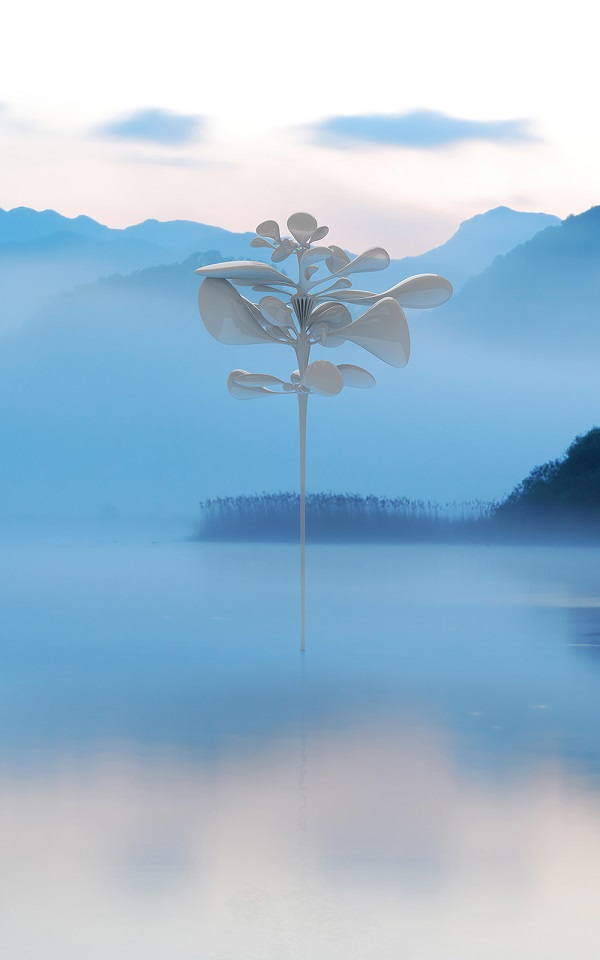
At Dawn
240 х 150 сm, digital print on aluminum, plexiglass | 2016
The second work At Dawn has an interesting story: it was meant as a visualization of the sculpture design based on the virtual flower Radar. First, I created a series of virtual flowers, following the idea of creating a virtual flora. I created an image for every flower, gave each a name, created a story of life. All the virtual flowers were put into virtual landscapes. And here I decided to transfer one of the virtual flowers into the real space – I was interested in the way how the real and digital nature can interact. As a result, appeared the synthesis as we see it now. Moreover, it gave me a boost to new thinking and new artworks.

Virtual Flowers
digital print | 2016
The reasonable discussions revolve around the matter that within 50 years the blurred lines between digital reality and our reality will be totally erased. Well, quite possible. In other words, it is quite possible that we will gradually transfer into the digital world and your virtually created flowers will become a reality.
Digital world is a part of reality. Nowadays it is still ephemeral, but the line between the real and virtual world is getting less visible. And the technologies develop rapidly, giving more possibilities, letting go deeper into unknown. It's a kind of an idea of life in the form of a computer game. Where it will lead, the future will show.
In fact, the artist is going to feel as a Creator and God. Don’t you feel that way?
I feel like I'm a Creator in God’s hands.
Does your reality, in general, calls out to any problems or it is just connected to your world perception? As they say, «contemporary art reflects the most burning issues of the day».
For me- as the most joyful issue of the day [laughing].
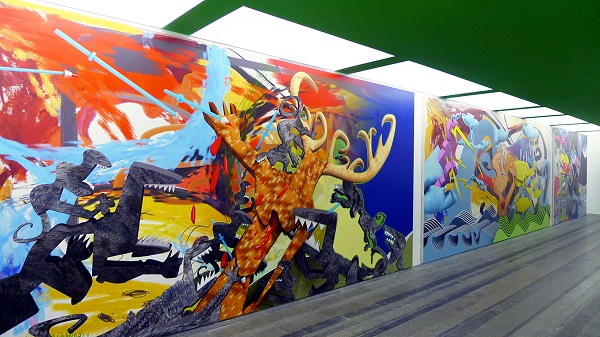
Left to right: The Death of Actaeon | Lemon Chicks Will Escape… | The Temptation of Saint Anthony
Exhibition: PinchukArtCentre Prize | Pinchuk Art Centre, Kiev | 2011
Photo: Vasilii Riabchenko
I remember your works on exhibition in the Ukrainian National Museum and in the PinchukArtCentre. They were very evocative and emotionally heavy.
Before creating the world, I had to fight for it
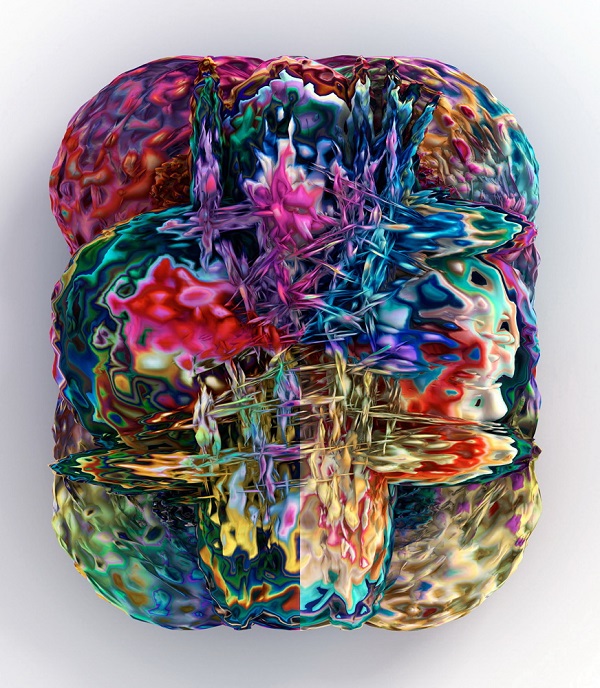
Plexus from the Computer Viruses series
digital print | 2013
Inherently, you put some gloss into your virtual reality, don't you agree? Say in the Computer Viruses series- viruses are deemed to be a negative thing. Some of your viruses look very positive, though even the very name «virus» bears the negative connotation.
I was interested in shifting the emphasis from "frightening" activities to the outside, to the aesthetics of the new meaning, to give embodiment to the originally incorporeal things. A person is afraid of unknown, something that he has not ever seen. At the end of the day, this is the idea of getting “infected” by art.
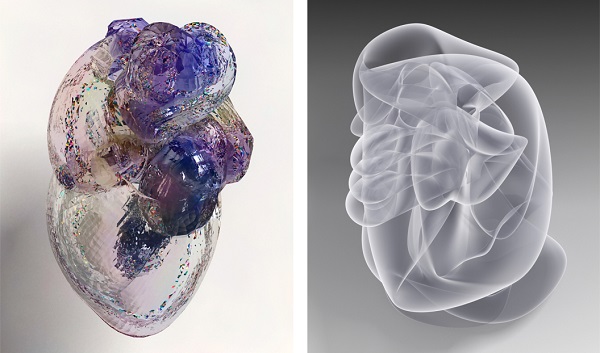
Sparkling from the Computer Viruses series | digital print | 2013
Ghost from the Computer Viruses series | digital print | 2013
I dare say, your surrealistic works do not only expand the space of the exhibition Art & Design, they transfer us to a completely different world. Where will you go and carry your world to? What are the next projects, you are involved into?
The next exhibition – Budapest, Ludwig Museum. At the exhibition under the name Permanent Revolution a whole section of modern Ukrainian art will be represented – three generations, 37 artists. My artwork – neon installation “All-hearing Ear”, appears on exhibition just in time. It is time for us to learn to listen and hear each other.
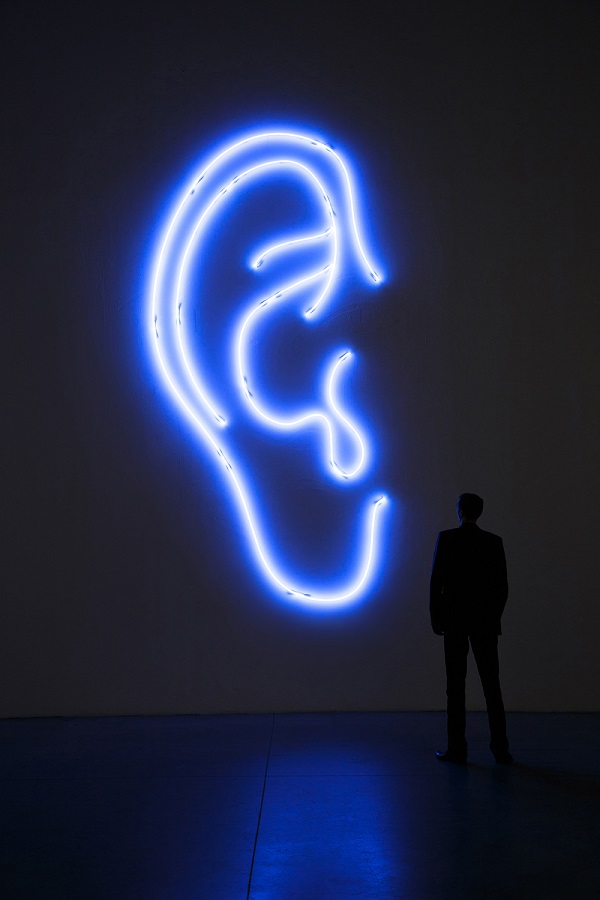
All-hearing Ear | 450 х 217 cm, installation, neon | 2015 – 2016
Exhibition: Event Horizon | Mystetskyi Arsenal, Kiev | 2016
Фото: Bohdan Poshyvailo
We will soon see the long-awaited exhibition in Budapest! Let’s get back to basics. We can speak of your family as a dynasty. Your father is a famous artist, grandfather also. How was it to be born and grow in such a family?
It was good to be born in such a family [laughing]. All my early childhood I spent in my father's workshop in Odessa, at the 16th Station of the Big Fountain, by the sea. There we lived – we had a beautiful garden, pets. Dad worked, and I bustled about the garden [smiling].
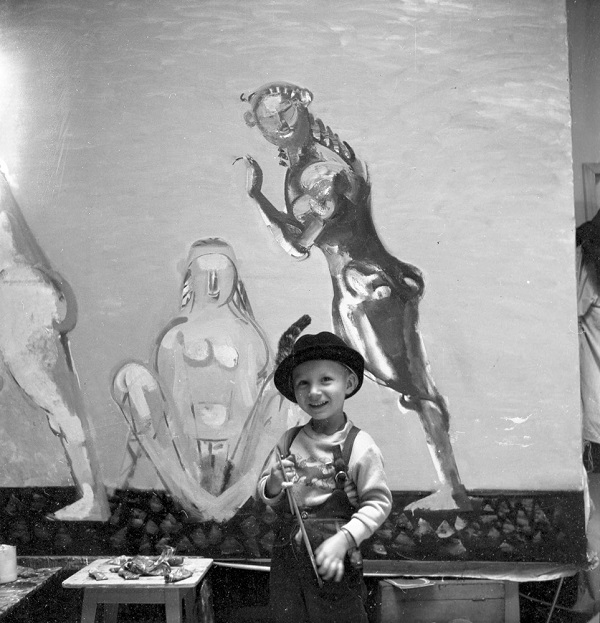
Stepan Riabchenko in front of the artwork Love – Not Love by Vasilii Riabchenko
16th Station of the Big Fountain, Odessa | 1990
Photo: Vasilii Riabchenko
Which movement do your father's artworks belong to?
Dad is a representative of the "Ukrainian New Wave", the period of 80-90s – in these years he created his significant works. And all this has been created when I was a little boy. We have a number of photos from my father's archive, where I am captured in pictures with the paint brushes, I added few touches on his paintings! They are still there in the artworks, father kept them. But I have got to know it only recently. Actually, then I did not realize that I lived in a creative family, it was so natural to me. It flowed and passed humbly. Then we moved to the city center, when I had to attend school. We settled in a house with the typical Odessa courtyard, with the clothes-lines through the whole courtyard and the cats’ realm.

The Temptation of Saint Anthony | 290 х 387 cm, digital printing on aluminum | 2010
Myth. Ukrainian Baroque | National Art Museum of Ukraine, Kiev | 2012
Photo: Stepan Riabchenko
What about your grandfather?
My grandfather used to be a graphic artist. I remember him well, I visited his studio. Grandfather created graphic series in different techniques: drawing, linocut, eau forte, lithographic painting... Many artworks are dedicated to the village, the city, port life, nature, he has admirable works done with felt-tip pens. We have the huge archive of his works.
Lemon Chicks Will Escape… | 290 х 681 cm, digital printing on aluminum | 2009
3rd Danube Biennale | Danubiana-Meulensteen Art Museum, Bratislava | 2015
Photo: Stepan Riabchenko
Which collections include the artworks of your father and grandfather?
Dad’s works are represented in the Zimmerli Art Museum in the USA, in many museums of Ukraine, Russia, in private and in numerous public collections. Grandfathers’ artworks are in private collections, in museums in Ukraine, including Odessa Art Museum.
We can say, that you have excelled your father and grandfather, in a way. Or is it still too early to say?
I give little thought to it. Each person sets objectives and deals with the challenges at a certain life stage. We are a big family and the joys are shared. [smiling].
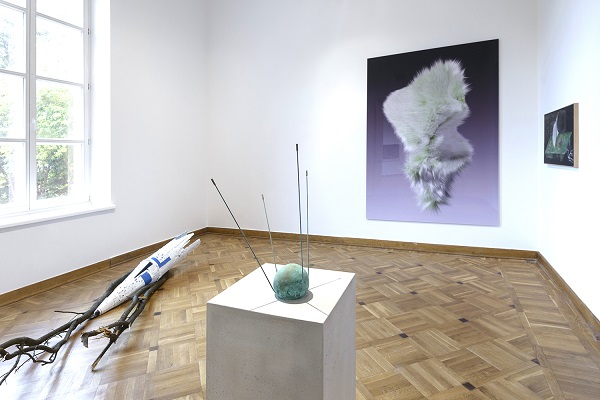
Melissa from the Computer Viruses series | 250 х 187,5 cm, Diasec | 2011 (from the collection of Art Collection Telecom)
«Polprawda — Half-truth» | Królikarnia Palace, Warsaw | 2017
Photo: Bartosz Górka
Stepan, tell us about the latest acquisitions of your artworks in the collections
Recently, one of my works has been purchased in the Deutsche Telekom collection. It is the extensive artwork Melissa from the Computer Viruses series, 250 х 187,5 cm, printed out in Düsseldorf. In a large size, it becomes human-scaled, and an interesting dialogue happens. This work from the collection has already been exhibited in the Królikarnia Palace in Warsaw, in the Museum of Modern Art in Zagreb. Hopefully it will continue to appear on exhibitions, this collection is in permanent working process. I consider it to be an extremely right approach. In Ukraine, this year my work has been acquired in the collection of Boris and Tatiana Grinuov. Several new works have been added to the Adamovskiy Foundation collection. It is important that they are enthusiastic collectors, intelligent and experienced people, who want to show and preserve the artifacts of our time.

Stepan Riabchenko and Natalia Shpitkovskaya in front of the artwork Dance in Art&Design exhibition
Photo: Ekaterina Zolotukhina
I agree with you, we need to promote in our country the concept of "public collection", in other words – an open collection. After all, the active and public collectors have an important, educational, "viral" influence by supporting the interest in art, as did Tereshchenko and Khanenko, for instance. How valuable and powerful could be the corporate collections! But that is another story to talk about later.

